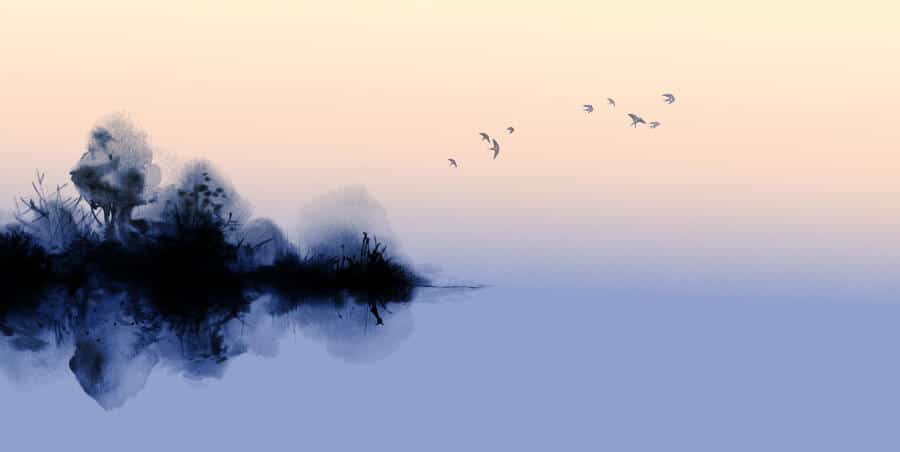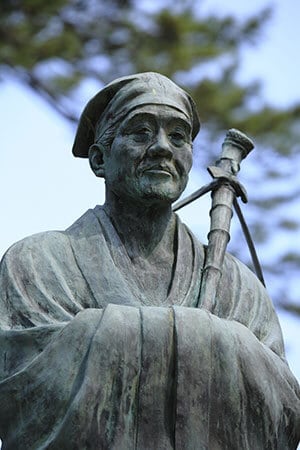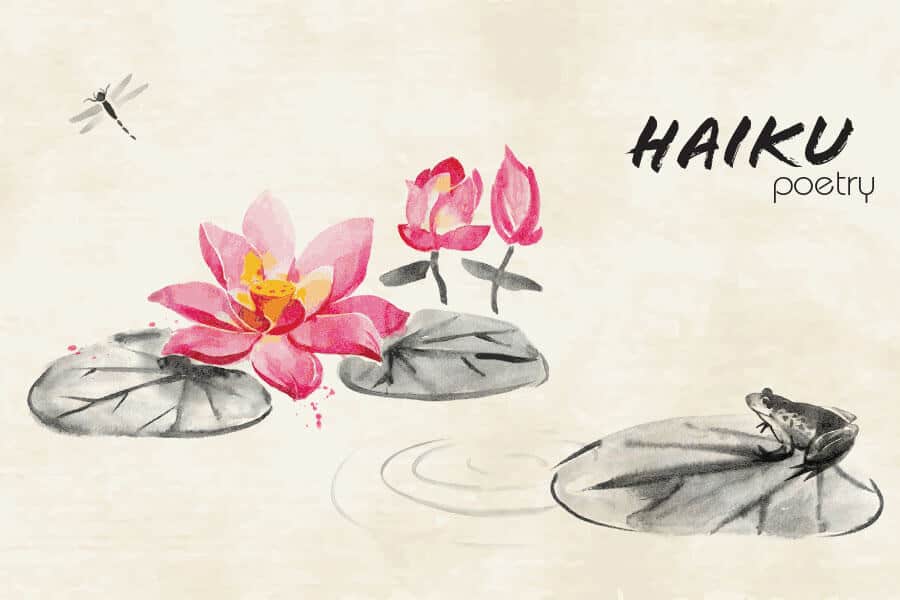Japan is known for its vibrant culture and literary tradition. It has one of the world’s highest literacy rates, with people spending over 4 hours per week reading. The Japanese have their very special mythological stories, figures, writing styles, and poetry. Among many other features of this rich heritage you will find the Haiku poems. But what makes these poems so special and different from others? Scroll on to be surprised by a very interesting style of poetry.
Most of the time, we are used to reading poetry that makes us shiver, but that is pretty descriptive. People express their feelings through long verses, hence we expect poetry to be very detailed. But that’s exactly why all other schools of poetry differ from Haiku.
What Is Haiku?
Haiku is a traditional, unrhymed, and structured short form of Japanese poetry which has fixed rules that apply to its composition. Haiku poetry is well known for the 5/7/5 rule, consisting of five syllables in the first line, seven in the second, and repeating five in the third.
Overall, a Haiku’s structure consists of 3 lines and 17 syllables, which you cannot exceed. Other traditional rules used to be that a Haiku should refer to a season of the year, with an element that signifies that season: flowers, blossoms, wind, or rivers, and that you should avoid the use of similes or metaphors within the poem.

Over the wintry Forest, winds howl in rage With no leaves to blow. -Natsume Sōseki
Although in traditional Haikus these rules still may apply, nowadays other themes are also practiced and accepted as long as the poetry relies on simplicity. Yes, simplicity, depth, lightness, and intensity, all expressed through 3 lines of poetry! Sounds difficult right, and that’s exactly what makes Haiku so precious in Japanese literature and also worldwide. Through those lines, a haiku poet is able to paint a vivid picture for the reader, using the most exact and profound words to describe his experience.
The Origin of Haiku
Haiku made its first appearance in Japanese literature during the 17th century, as a brief expression of poetic traditions, although it first became known by the name Haiku in the 19th century.
Life’s little, our heads sad. Redeemed and wasting clay this chance. Be of use. -Ravi Shankar
According to Britannica, The term Haiku derives from the first element of the word haikai (a humorous form of renga, or linked-verse poem) and the second element of the word hokku (the initial stanza of a renga). The Renga was an oral poem, generally a hundred stanzas long, which was also composed syllabically. Eventually, the Hokku was considered almost an independent poem, as it had to mention in three lines subjects like the seasons, qualities of the surroundings and landscape, or other descriptive elements which set the tone of a Renga.
“Originally, the Haiku form was restricted in subject matter to an objective description of nature suggestive of one of the seasons, evoking a definite, though unstated, emotional response.”

Haiku poetry gained a wider following after the great Haiku master, Matsuo Bashō, started using it in a more refined way to express conscious art, during the years 1603 – 1867. Bashō’s writings were considered by readers and critics at the time as a new style of poetry, as his experiences were inspired from his constant traveling throughout Japan, hence, becoming the subject of his verse.
His Haiku (notice that Haiku refers to both the singular and the plural) reached a large audience in Japanese society. This reach and reputation helped establish Haiku as one of the most popular and appealing forms of Japanese poetry. Matsuo Bashō wrote one of the most classic Haiku:
An old silent pond A frog jumps into the pond— Splash! Silence again.
Haiku started emerging in the West in the 1800s, and more significantly after World War II. Although it retains its place as one of Japan’s most precious literacy legacies, poems written in other languages but in the same form are also called Haiku. This form of poetry can be very difficult to compose; however, it makes one understand how the simplest things that we observe routinely in nature can become meaningful if you find the right words to articulate them. Basho shows us that even the sound of a frog jumping into its pond can become an engrossing subject, and a captivating one as the words of the poem provide us a vivid image and evocation of sound.
To conclude this article, we have gathered some of the most precious Haiku we could find, written by different poets. See for yourself, if you’re able to find visualization and lightness through these pieces of art.

Clouds appear and bring - to men a chance to rest from looking at the moon. -Basho
The light of a candle Is transferred to another candle— Spring twilight. -Yosa Buson
Love between us is speech and breath. loving you is a long river running. -Sonia Sanchez
Mosquito at my ear— does he think I’m deaf? -Issa
Toward those short trees We saw a hawk descending On a day in spring. - Shiki
Spring is passing. The birds cry, and the fishes’ eyes are With tears. -Basho
Photos: Shutterstock / Edited by: Martina Advaney
More about literature can be read here.
Support us!
All your donations will be used to pay the magazine’s journalists and to support the ongoing costs of maintaining the site.
Share this post
Interested in co-operating with us?
We are open to co-operation from writers and businesses alike. You can reach us on our email at [email protected]/[email protected] and we will get back to you as quick as we can.









